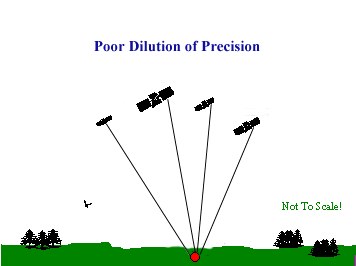اي جهاز جي بي اس يحتوي على حساس (لاقط)لموجات الجي بي اس......اذن فهو ياخذ من القمر الصناعي موجات
كما فيا لصورة

There are three types of GPS receivers which are available in today's marketplace. Each of the three types offers different levels of accuracy, and has different requirements to obtain those accuracies. To this point, the discussion in this book has focused on Coarse Acquisition (C/A code) GPS receivers. The two remaining types of GPS receiver are Carrier Phase receivers and Dual Frequency receivers.
C/A Code receivers
C/A Code receivers typically provide 1-5 meter GPS position accuracy with differential correction. C/A Code GPS receivers provide a sufficient degree of accuracy to make them useful in most GIS applications.
C/A Code receivers can provide 1-5 meter GPS position accuracy with an occupation time of 1 second. Longer occupation times (up to 3 minutes) will provide GPS position accuracies consistently within 1-3 meters. Recent advances in GPS receiver design will now allow a C/A Code receiver to provide sub-meter accuracy, down to 30 cm.
Carrier Phase receivers
Carrier Phase receivers typically provide 10-30 cm GPS position accuracy with differential correction. Carrier Phase receivers provide the higher level of accuracy demanded by certain GIS applications.
Carrier Phase receivers measure the distance from the receiver to the satellites by counting the number of waves that carry the C/A Code signal. This method of determining position is much more accurate; however, it does require a substatially higher occupation time to attain 10-30 cm accuracy. Initializing a Carrier Phase GPS job on a known point requires an occupation time of about 5 minutes. Initializing a Carrier Phase GPS job on an unknown point requires an occupation time of about 30-40 minutes.
Additional requirements, such as maintaining the same satellite constellation throughout the job, performance under canopy and the need to be very close to a base station, limit the applicability of Carrier Phase GPS receivers to many GIS applications.
Dual-Frequency receivers
Dual-Frequency receivers are capable of providing sub-centimeter GPS position accuracy with differential correction. Dual-Frequency receivers provide "survey grade" accuracies not often required for GIS applications.
Dual-Frequency receivers receive signals from the satellites on two frequencies simultaneously. Receiving GPS signals on two frequencies simultaneously allows the receiver to determine very precise positions
.